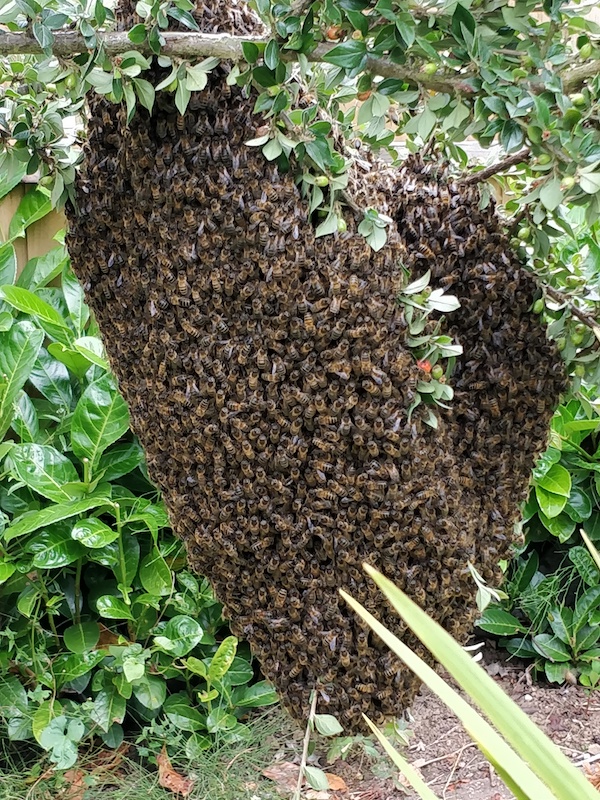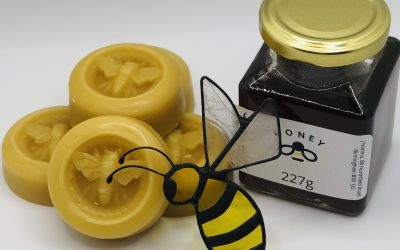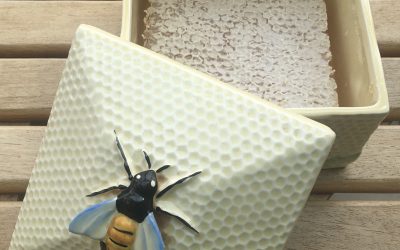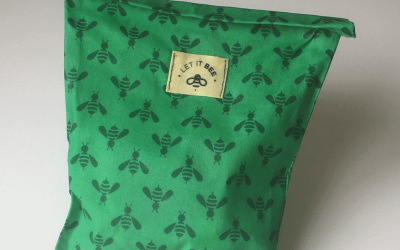Latest News
Read on for the latest news from Let It Bee
Propolis – it’s bee magic
From propolis tincture to bee magic salve You might not have heard about it before, and it really doesn’t look much, but propolis, or bee-glue, is really amazing stuff! Bees collect it from sticky...
Make your garden irresistible to bees
Spring is finally here. As the weather warms up honeybees are emerging to look for nectar and pollen, food that provides the energy needed to build up their colonies. With an average of at least 20,000 to 40,000 bees in a typical beehive, they need lots of food!
Beauty and the Bees
Products from the beehive have improved human lives for thousands of years. So what bee goodies do we use in our different skincare products and why? Our bees produce raw, unheated honey which is a...
Honeycomb is awesome
All honeys from local hives are delicious and have distinctive flavours. Most honey lovers like runny honey but spreading it thickly on your toast is tricky as it dribbles :-). For me honeycomb is...
What do honey bees do in the winter?
I'm often asked what happens to bee colonies in the winter. Well for many bees and wasps only the queens live through the winter. However, honey bees are different as they remain active all year...
Bee Helpful
Bees are amazing creatures and absolutely crucial to our everyday lives. We can each do our bit to help them thrive.
New Product: Beeswax Snack Bags
We’re pleased to announce that we have launched a brand new product in our ‘For your home’ range: Reusable Beeswax Snack Bags
Why do bees swarm?
If you see a big, swirling cloud heading out across the rooftops and trees, it could be a swarm of honeybees. They have left the safety of their hive and are flying off to find a new home – a hole in a tree, a chimney or an empty hive. It's an awesome sight!
Swarming bees are full of honey - carrying supplies for their new home - so they usually don't sting. But it's best to stand well back just in case!
Swarming is an important, natural process. It happens when a colony of honeybees splits and the queen takes a large number of worker bees with her in search of a new home. It's the way they reproduce. As soon as the old queen reaches the new nest site her entourage builds wax honeycomb so then she can lay her eggs and there’s space for pollen and honey stores.
Meanwhile in the original hive site new queens are hatching. Another one or two queens might leave the colony to set up a new home but one will stay to rule over the original hive. In this way the colony becomes two, three or more colonies.
Honey bees mostly swarm early in the season from late April to June. So this is a busy time for beekeepers!
Swarming early in the season gives the bees enough time to set up their new home and gather plenty of stores to see them through the winter. Beekeepers put out bait hives to try to lure a passing swarm. We also ‘artificially’ swarm our colonies which means separating the brood from the queen and flying bees. This splits the colonies and the urge to swarm goes away - usually!
So if you are lucky enough to see a swarm of bees, marvel at this force of nature and then find your local swarm collector here: https://www.bbka.org.uk/swarm#swarmmap








